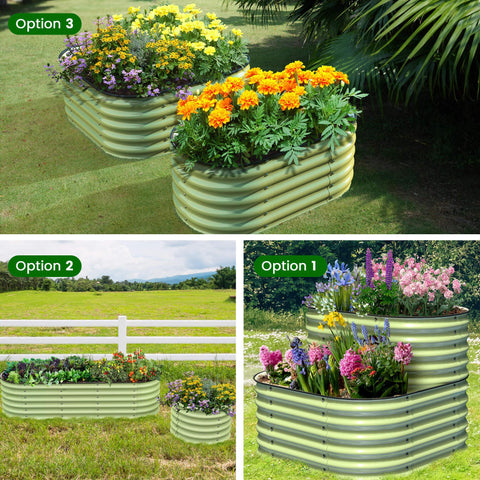Tips from Olle Garden Bed: The Best Time to Trim Roses
Creating a beautiful garden full of vibrant plants and flowers is one of the greatest joys in life, but it requires time, energy, and knowledge to ensure their healthy and healthy growth. Pruning is a part of this maintenance, and there is an optimal time to trim delicate flowers. The following content also has some reference value for raised garden beds.
Pruning at the right time helps promote the healthy growth of roses and encourages the formation of new buds. By understanding when to do this, you can expect a lush garden full of colorful petals throughout the season! Explore the best time to trim roses and how it helps them stay fashionable season after season.
When is it pruned?
When it comes to knowing the best time to prune roses, it all depends on the type of rose you have.
Old Wood Rose
Old wood roses rarely require hard pruning. However, they do benefit from thinning and shaping. It helps to promote new growth and create a more attractive overall appearance.
You should prune roses that bloom only once per season on old wood - such as some old garden roses - once they have completed their summer flowering. To prune these roses, the first step is to remove fragile or dead vines and branches until healthy living tissue is achieved. If you find the bottom of your rose bush bare, you may need to move one or two walking sticks back to a level close to the ground. This can encourage new growth at the base of the rose plant.
Reboom/New Wood Rose
On the other hand, pruning roses that bloom several times throughout the season, when their buds swell in late March or early April. This includes roses blooming on new wood. But how you prune depends on the specific rose you have.
For hybrids, large flowers, and flowers
In order to properly trim roses that bloom repeatedly, first remove 1/3 to 2/3 of the length of the cane, and then cut back the outer buds. Intended to reduce your plant to a total of three to six walking sticks for optimal growth.
Used for climbing roses
Firstly, in early spring, cut the side branches or branches into two or three buds or about 6 inches in length. This can promote healthy new growth and bloom in large numbers throughout the summer.
In addition, occasionally selectively thin the older cane to the bottom. A thin and mature cane can allow more light and air to penetrate. This helps with photosynthesis and prevents excessive humidity, which can lead to fungal diseases and pests.
Old garden roses and modern shrubs that bloom repeatedly
For old flowering and modern shrubs, reducing the main vine by 1/2 and reducing the lateral buds by two is the key to promoting sufficient flowering throughout the season.
In addition, branches that have been loose for more than three years. This ensures that sufficient light reaches all areas of the rose garden!
Tips for pruning roses
Pruning roses helps ensure that these beautiful flowers remain in their best condition, but remember that when you do this, it depends on the type of rose you have.
Preparing to trim roses
Collect the necessary tools you need. Trim scissors, gloves, and disinfectant, such as bleach, topical alcohol, or milk. Disinfect the tools before use to reduce the chance of infection or disease spreading between plants.
In addition, remove any debris around the bottom of each cane. This includes dead leaves, branches, weeds, or other materials that may hinder your work.
Then determine which branches need to be trimmed. Look for those who are dead, sick, damaged, or intersecting.
Wear gloves
Firstly, always wear gloves when pruning to protect yourself from thorns and protect roses from potential diseases. In addition, use sharp tools in work. Sharp tools make cutting easier and help you achieve clean cutting.
Understand your perspective
When cutting, aim at a 45 degree angle with the bud to allow water to flow freely. Don't forget to remove dead or diseased branches from the rose bushes! Removing these buds helps ensure that only healthy leaves remain on the plant.
draw up a plan
If you are unsure how much to trim, start with a small amount and gradually increase it until you are satisfied with the results. Always remember to leave some healthy leaves on plants so that they can undergo photosynthesis and generate energy for growth.


